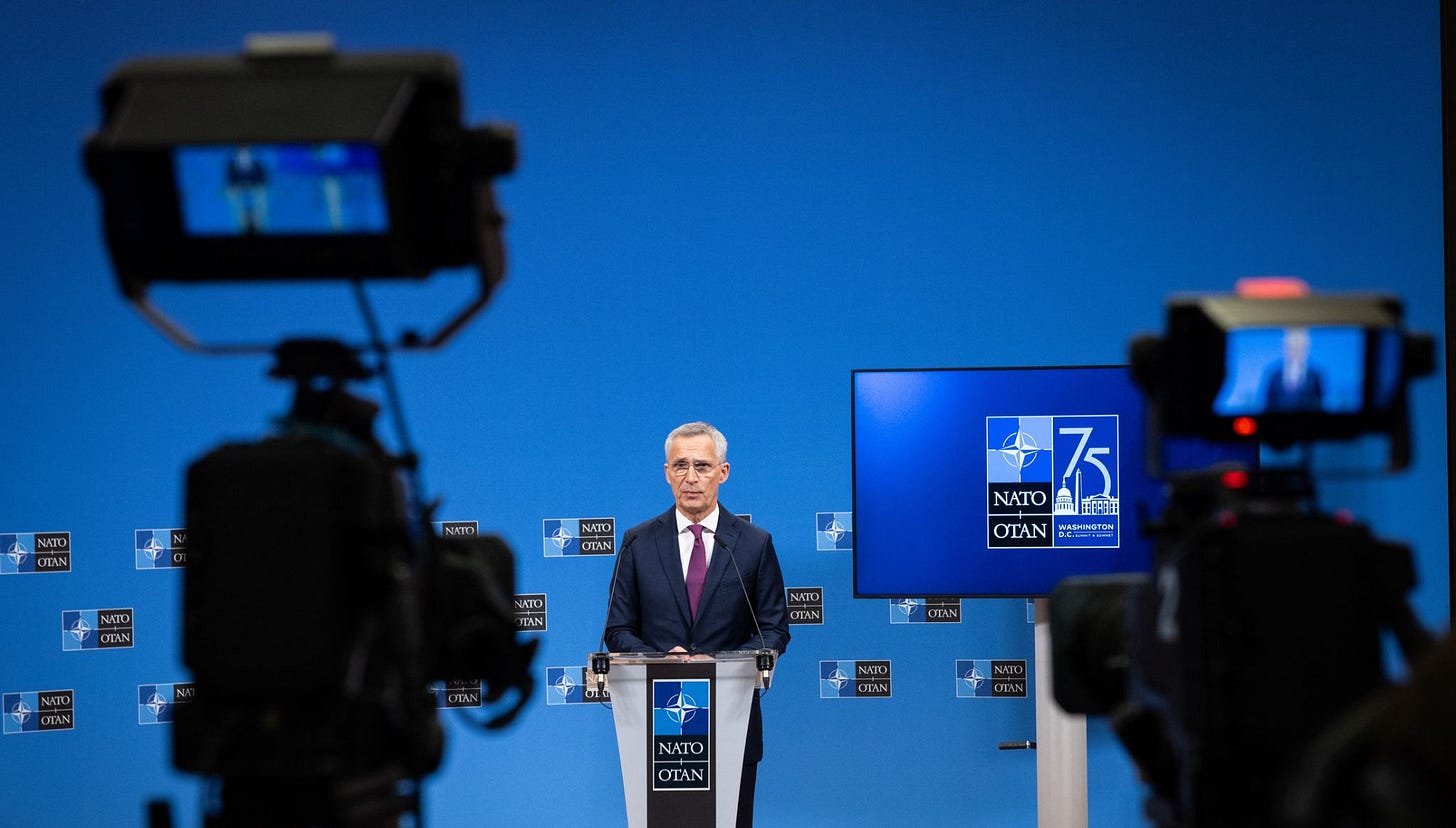NATO Will Finalize $43B Ukrainian Military Aid at Summit
Sweden's Saab is well-positioned to benefit from European defense spending

North Atlantic Treaty Organization (NATO) allies and global partners will meet in Washington for a summit from July 9 to 11 to bolster support for Ukraine and strengthen their defense and deterrence capabilities.
The summit comes less than a week after NATO members pledged on July 3 to provide Ukraine with $43 billion in military aid for the next year regardless of any leadership changes among members. NATO leaders will finalize the latest Ukrainian military assistance at the summit.
The Ukrainian funding will come from individual member states contributions, not directly from a NATO-run investment fund or program that would allow the alliance to direct money to particular companies. The alliance has prioritized supplying Ukraine with older Soviet-era systems as well as Western-origin weapons.
Representatives from NATO's 40+ global partners, including the European Union (EU) and Moldova, Georgia and Bosnia and Herzegovina are expected to attend the summit.
NATO has invited Indo-Pacific partners such as Australia, Japan, New Zealand, and South Korea. Given Russia's increasing military cooperation with North Korea and attempts to coerce Seoul over its support for Ukraine, a bilateral security agreement between NATO and South Korea could be on the table.
Boost Arms Production
The non-binding commitment for Ukraine's military assistance will come from existing inventories and production capabilities based on each country's gross domestic income. It is aligned with NATO’s 2% target of GDP in defense spending.
NATO has pushed members to boost their arms production, especially for "battle-decisive ammunition," like artillery shells and air defense missiles. Production is expected to increase from 100,000 artillery shells at the start of the war to 3 million rounds in 2025.
Europe increased its military spending in 2023 to $588 billion, twice the spending of 2014, and an increase of 16% from 2022, according to data by the Stockholm International Peace Research Institute (SIPRI).
“This year, I expect 18 allies to spend 2% of their GDP on defense,” outgoing NATO Secretary-General Jens Stoltenberg said in February after US presidential candidate Donald Trump criticized NATO for underinvesting. Efforts by Stoltenberg, whose term ends on October 1, to provide Ukraine with about $107 billion as part of a multi-year commitment has raised concerns among allies.
Some diplomats have questioned the lack of long-term predictability of providing military aid to Ukraine. The future policy of Washington could change if former president Donald Trump is re-elected, though they acknowledged that NATO’s collective response as “Trump-proofing.”
Kiev has received about $380 billion in assistance since 2022.
Top Suppliers
Since Russia’s invasion of Ukraine, top military suppliers have included the US, Germany, France, and the UK. Defense spending in Poland, Czechia, Slovakia, and Hungary has expanded after decades of underinvestment following the Cold War.
Poland's defense budget reached 3.9% of GDP in 2023, nearly twice NATO’s target, making it one of the highest military spenders among members. It imported $2.69 billion of arms, ammunition parts and accessories in 2023,
Warsaw’s defense budget is expected to grow at a CAGR of over 10% through 2028. The country plans to spend 50% of its budget on modernizing its domestic defense industry in response to Russia’s aggression against Ukraine.
NATO members defense expenditures as a percentage of GDP 2023

State-owned Polish Armaments Group (PGZ) may benefit from “Polonization,” a process involving Polish companies producing goods supplied to Poland by foreign contractors. PGZ will likely be unable to meet demand as it faces competition limitations under EU law.
Cooperation with foreign firms will help fill capability gaps and meet the country’s objectives.
Poland already purchases equipment such as Abrams tanks, Patriot air defense systems, F-35 fighter jets, and HIMARS rocket launchers from major US, but not only, suppliers. International defense firms active in the Polish market include Lockheed Martin (NYSE:LMT), Raytheon (NYSE:RTX), Northrop Grumman (NYSE:NOC), Boeing (NYSE:BA), Bell (TO:BCE) and BAE Systems (LSE:BA.L).
Swedish aerospace and defense company Saab (STO:SAAB-B.ST) commands over 5% of Warsaw’s total 2023 defense spending of $31.6 billion, or 12% of its current market cap just from the Carl-Gustaf deal of 2024.
Sweden’s Saab
Saab is well-positioned to benefit from defense spending in Sweden and the EU.
Sweden announced on May 29 its 16th and biggest Ukrainian aid package of $1.25 billion, bringing its total aid to $9.4 billion. Separate from its contracts with Canada and the NATO Support and Procurement Agency, the country’s Defence Materiel Administration accounted for over 10% of Saab’s sales in the prior quarter.
With the EU needing to double its defense investments over the next decade to €500 billion to modernize its defense industrial base, Saab will benefit. Saab upgraded its 2024 outlook for organic sales growth to 15-20%, heightened by geopolitical demand.
Saab’s stock has increased 500% since the war began, surging to 250 krona to date following its May 8 4:1 split. It boasts double-digit revenue and ROE, and a strong inventory and backlog to allow growth, with a higher P/E implying high growth investor expectations.
"With the changed market conditions, but also Saab's position, we continue to be a company with substantial growth opportunities,” Christian Luiga, the company’s outgoing CFO and Deputy CEO, said during the release of first quarter results.




